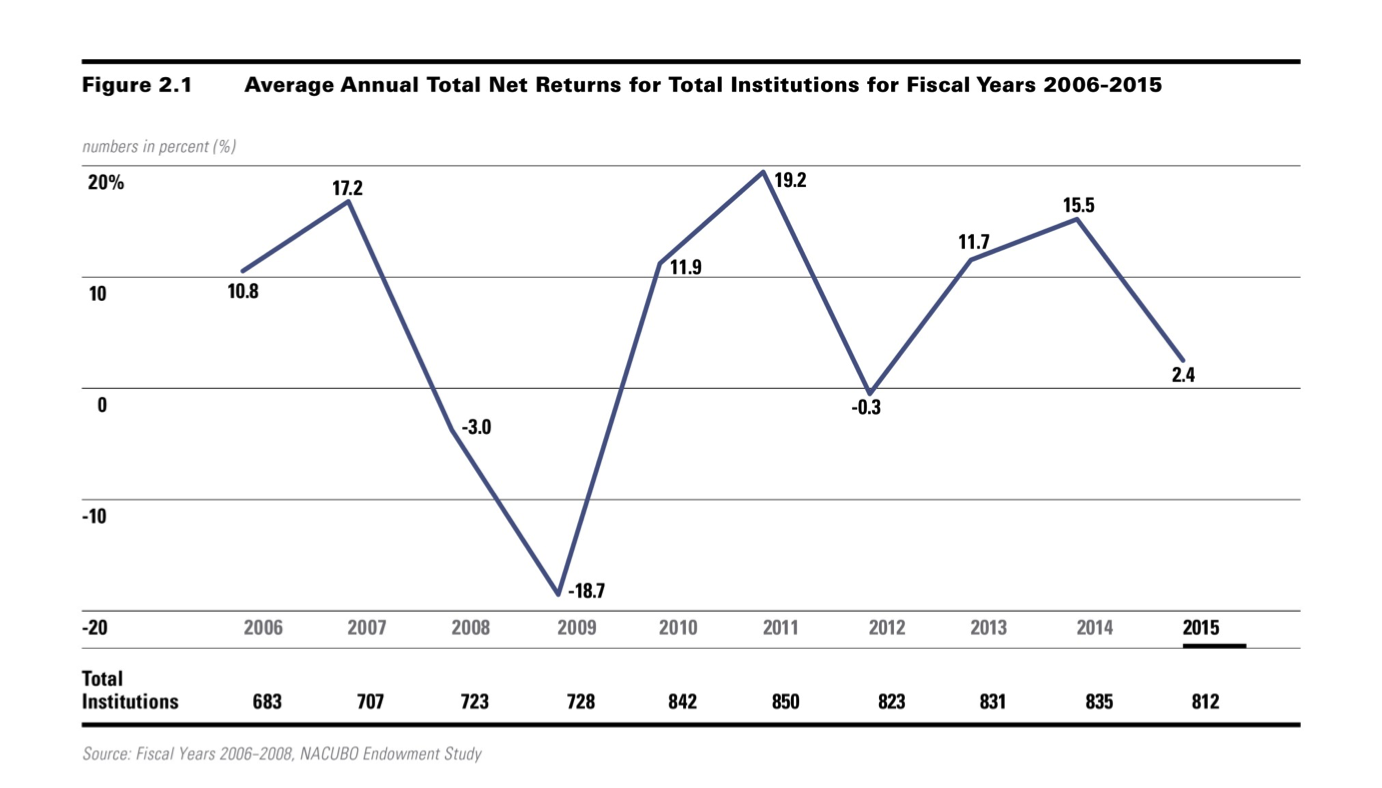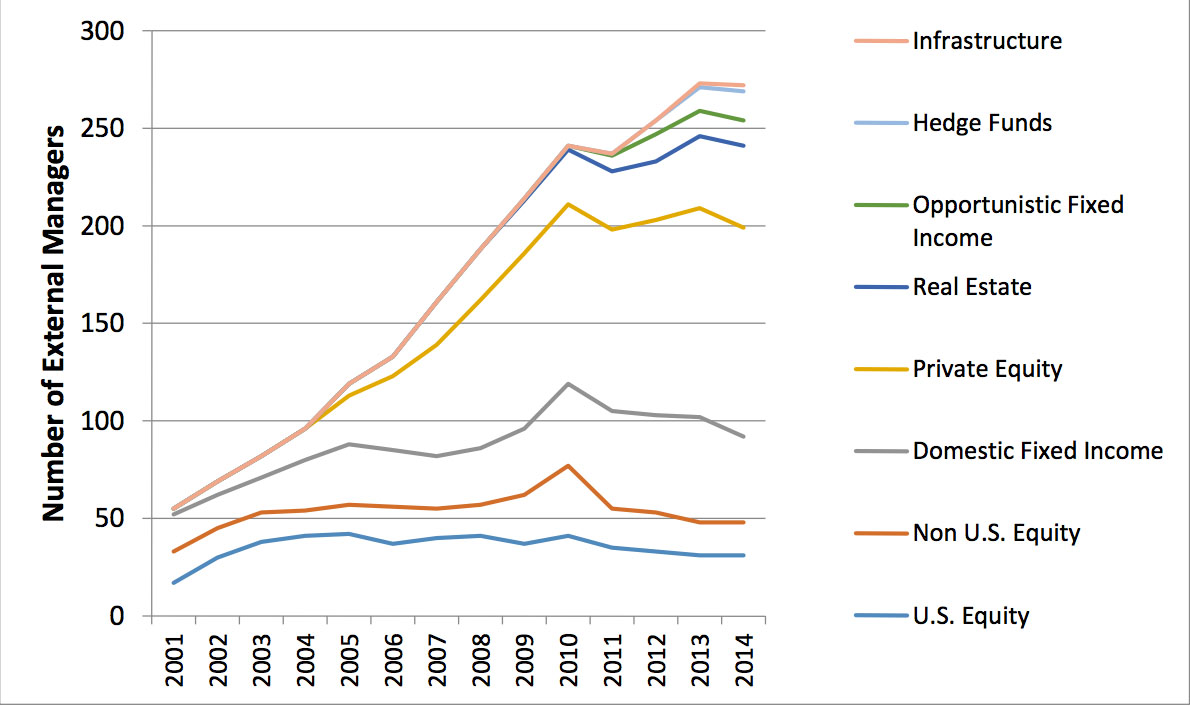US endowments recorded the lowest returns for the 2015 fiscal year since 2012 and reached a hiatus in outsourcing, according to NACUBO and Commonfund.
The joint study of 812 colleges representing a total of $529 billion in assets revealed endowments returned an average of 2.4% net of fees, a sharp drop from 2014’s 15.5%.
“FY 2015’s lower average one-year return is a great concern,” said John Walda, NACUBO’s president and CEO. “Lower returns may make it even tougher for colleges and universities to adequately fund financial aid, research, and other programs that are very reliant on endowment earnings and are vital to institutions’ missions.”
The dampened gains also contributed to a decline in endowments’ long-term return to 6.3% over a decade, from last year’s 7.1%.
“The 7% target return could be a tall order over the next few years,” cautioned Catherine Keating, Commonfund’s president and CEO, on the conference call. “The endowment model can evolve and is still the best formula for long-term success… But a 6% or so range of returns—including alpha—is more likely going forward.”
Furthermore, NACUBO and Commonfund found endowments’ asset allocation remained stable despite turbulent market conditions in 2015, with small shifts away from equities to alternatives.
“Institutions are not panicking, not interested in twitchy things, and they have a steady-as-she-goes way of looking at the portfolio,” said Commonfund’s Executive Director Bill Jarvis.
The percentage of “substantially outsourced” endowments also remained the same at 43% over the last year, which may indicate a “pause in this trend.” The vast majority (84%) of respondents reported using a consultant for various services.
Endowments continued to focus on risk management in 2015, with 62% of funds using risk limits in their portfolios, up from 57% in 2014.
More than two-thirds of surveyed asset owners said they use measures such as alpha and beta—an increase from 61% in 2014—while more than half conducted stress testing or scenario analysis.

Related:Endowments Outsource More, Bring Risk Management to the Fore & Death to NACUBO

 Source: New York City Office of the Comptroller
Source: New York City Office of the Comptroller